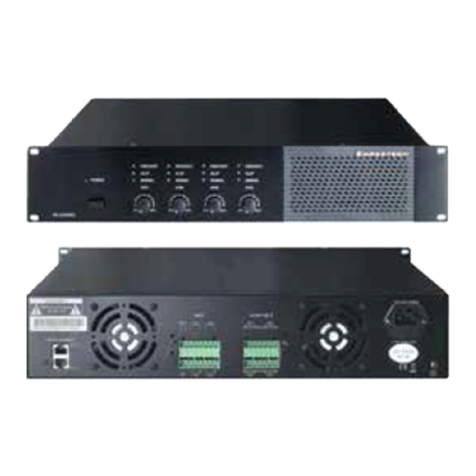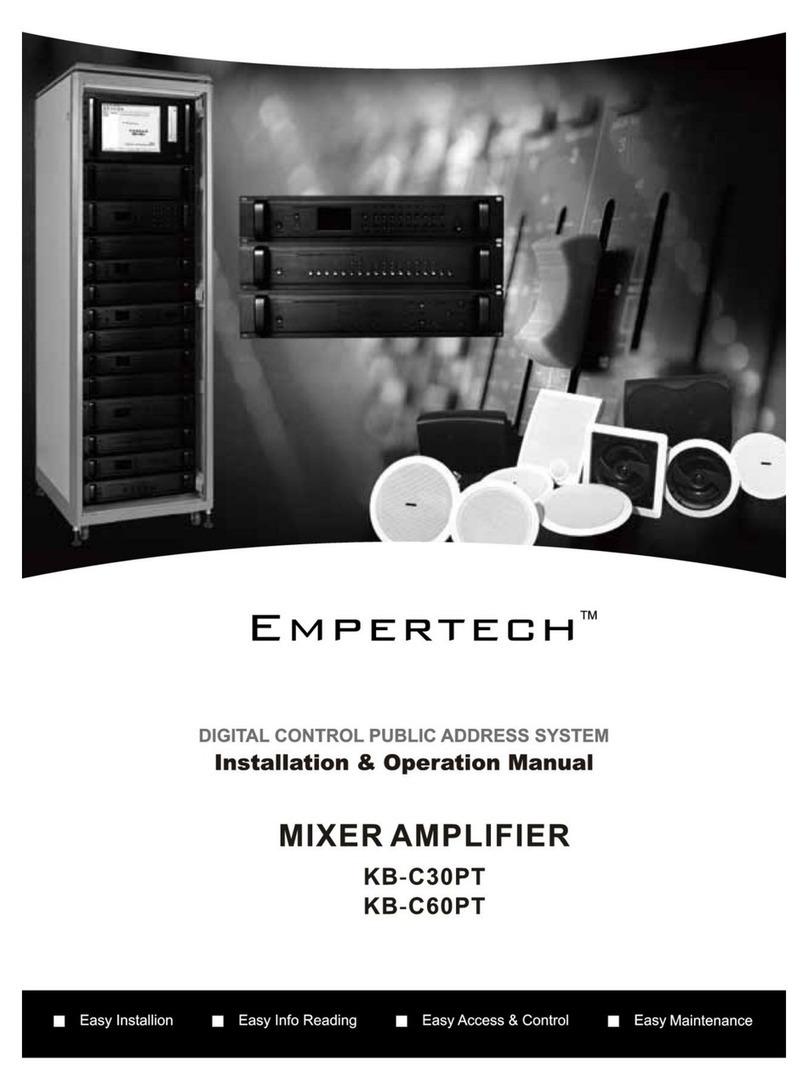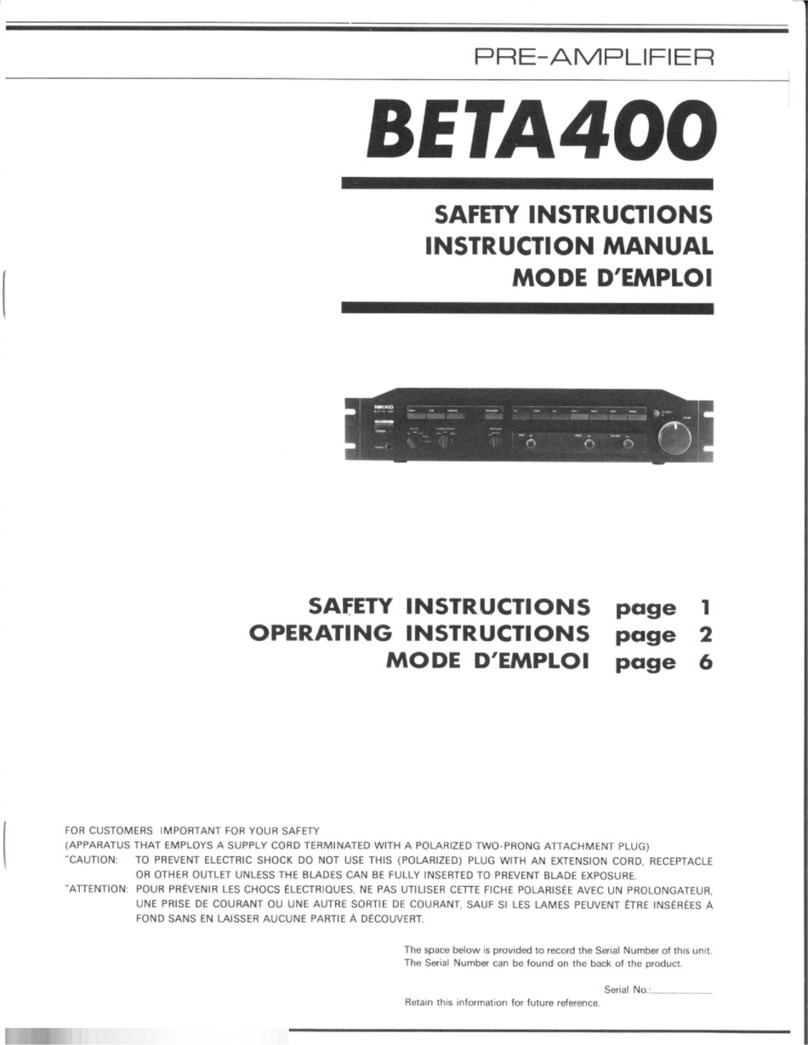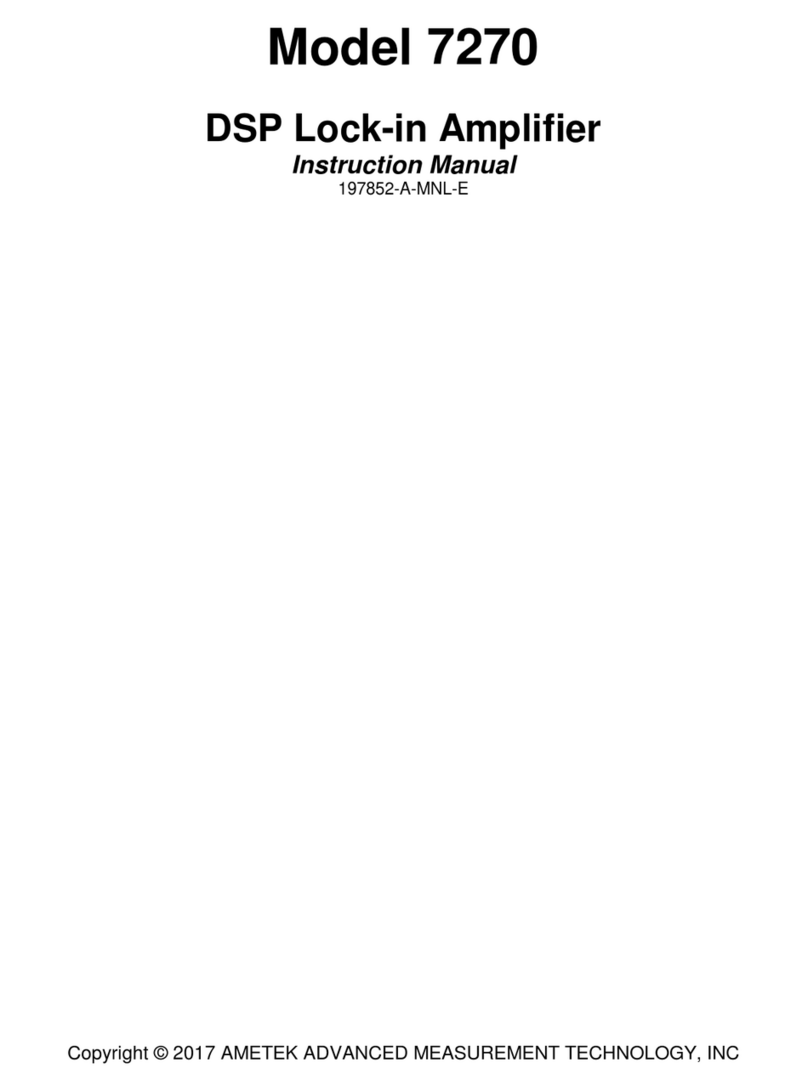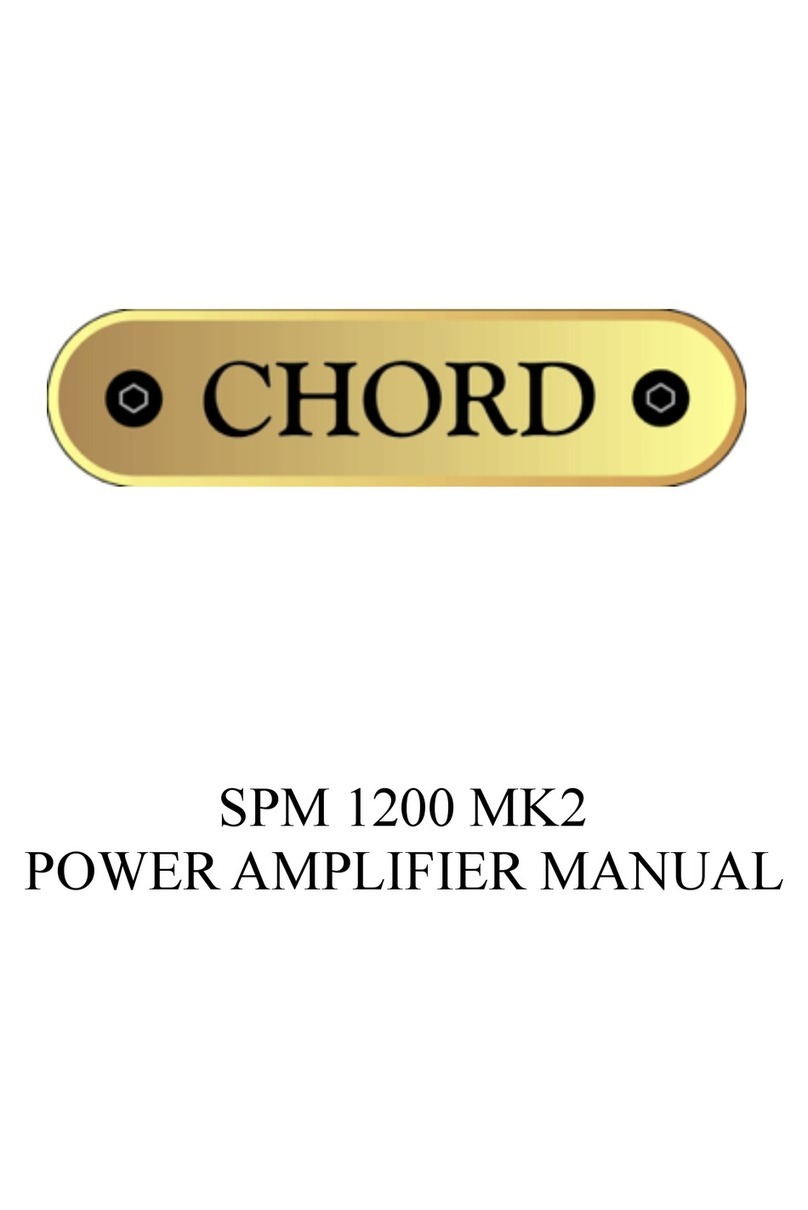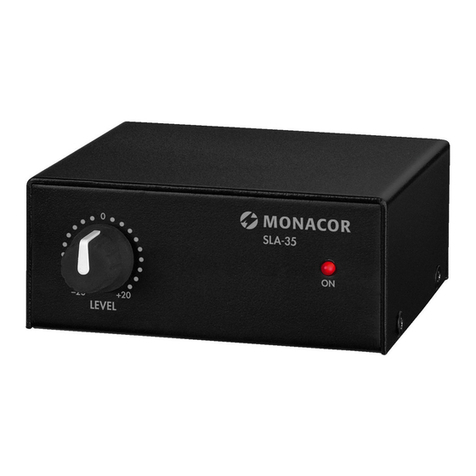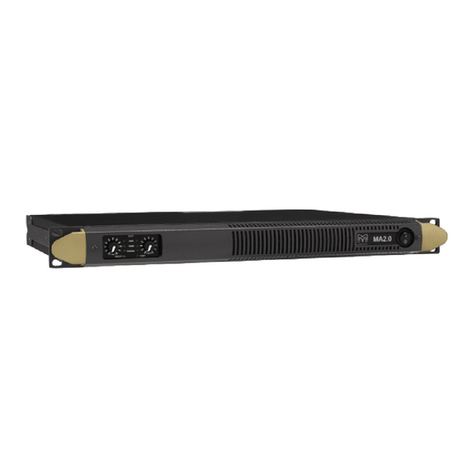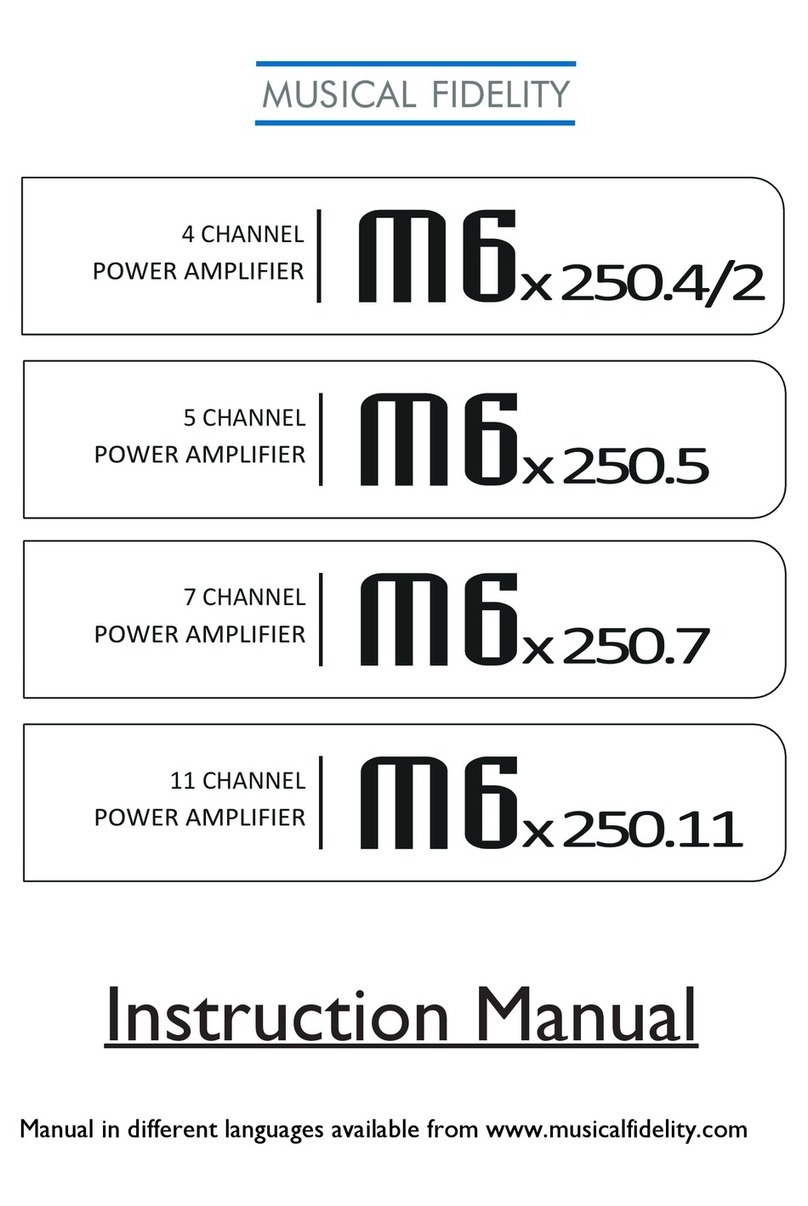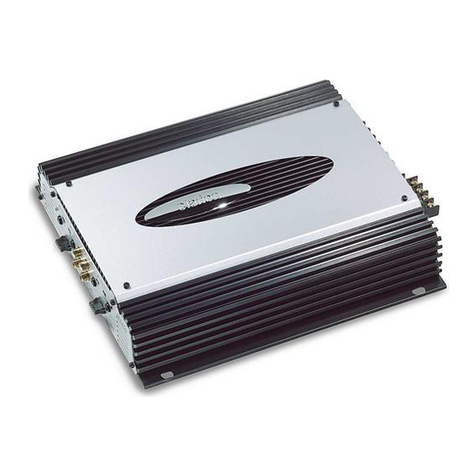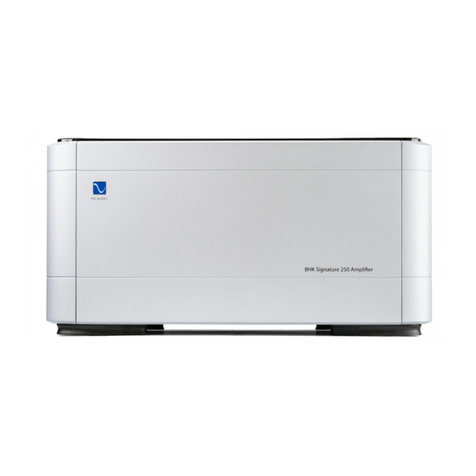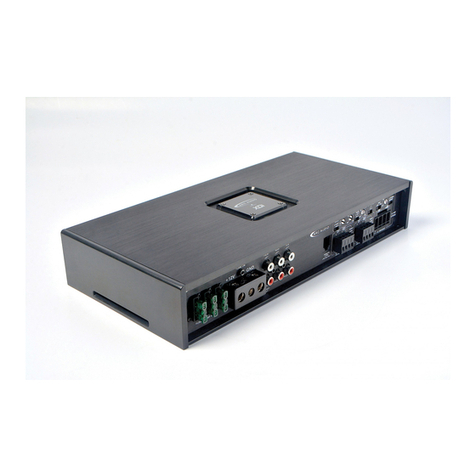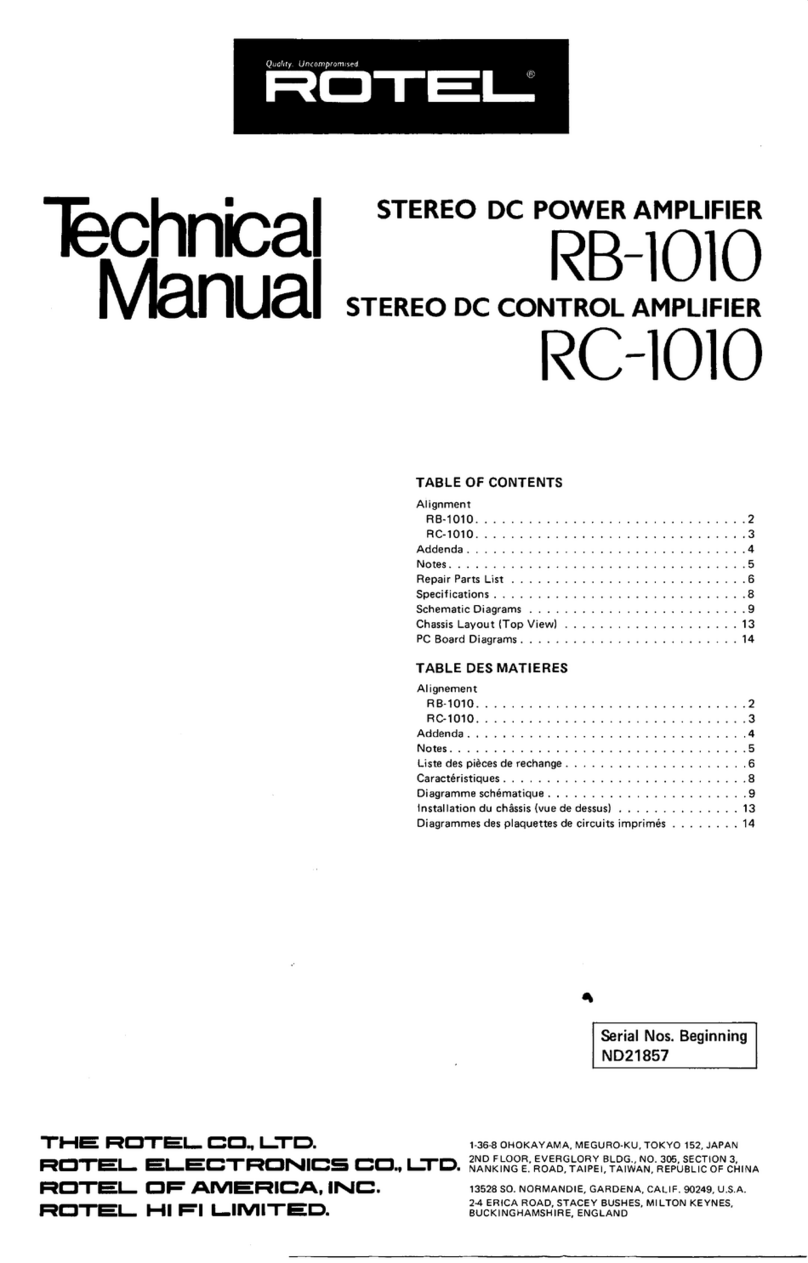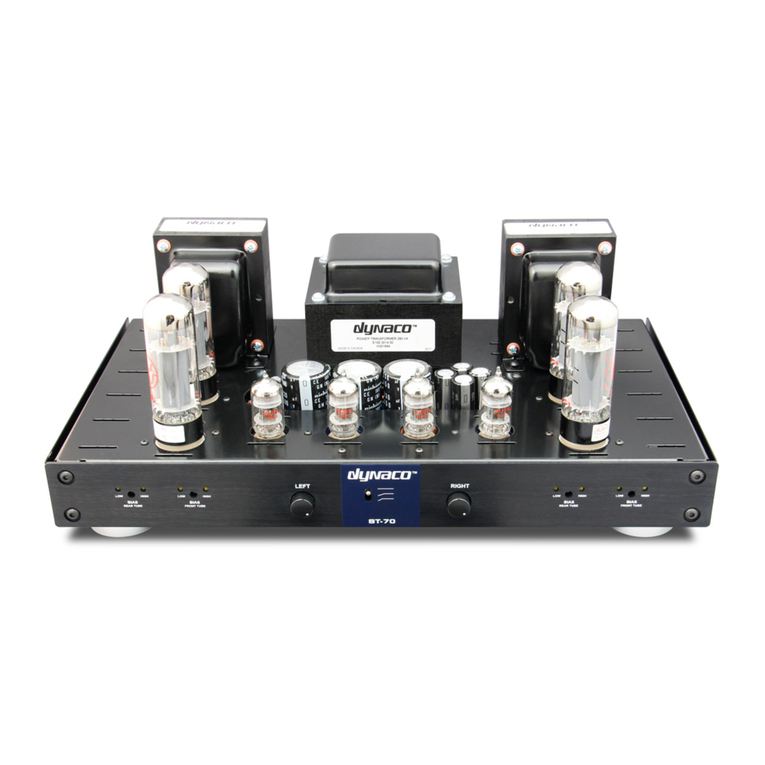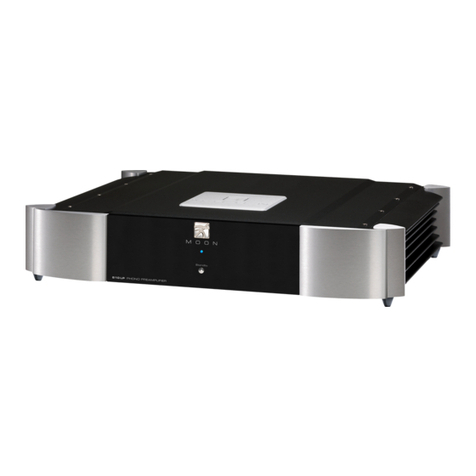Empertech KB-DA1500 User manual

KB-DA1500
High Efficiency Power Amplifier
User Manual
M_2000060561_EN_1.0
Easy Installation
Easy Info Reading
Easy Access & Control
Easy Maintenance

Copyright
© 2011 Honeywell International Inc. All rights reserved.
No part of this document may be reproduced in any form without the written permission
of the copyright owner.
Disclaimer
The contents of this document are subject to revision without notice due to continued
progress in methodology, design, and manufacturing. Honeywell shall have no liability
for any error or damage of any kind resulting from the use of this document.
Trademark List
All trademarks mentioned herein are the property of their respective owners. These are
shown in the document Trademark Information.

This sign means to alert the user that there are non-
insulated materials within the enclosure, which pose
threats of electrocution if mishandled.
This sign means to alert the user of important operation
and maintenance instructions.
Caution: To avoid electrocution, do not use polarized plug
with an extension cord, receptacle, or other outlet unless
the blades can be fully inserted to prevent blade
exposure.
Caution: Do not block ventilation openings and stack other
equipment on top.


i
Suggestions for Safety
For the installation, operation, and use of this product, please carefully read the
following precautions.
Electrical Safety
The product installation and use must comply with local electrical safety regulations.
Honeywell assumes no liability for user errors or misuse that result in a fire or an electrical
shock.
Transportation Safety
During transportation, do not violently shake the appliance or expose it to corrosive liquids.
Environmental Regulations
Do not install the appliance in an environment with extreme temperatures or excessive
amounts of dust.
The appliance should be placed away from direct sunlight in a well-ventilated, clean, and
stable environment without vibrations or shocks.
The required appliance power supply voltage is AC 220V (-15% ~ +10%) 5- ~ 60 Hz. If the
voltage is too high, too low, or fluctuates too drastically, it is recommended to install a
stable AC power source.
The appliance is not waterproof. Do not expose the appliance to rain or moisture, and
avoid splashing it with water. Do not place any items filled with liquid on top of the product
(such as a flower vase) to avoid damage.
Place the appliance away from sources of heat and ensure adequate ventilation space.
Place the appliance on a level, stabilized surface or rack.
Do not place other items on top of the appliance.
Safe Use Precautions
Install the equipment under the guidance of qualified technicians.
Before using the appliance, make sure that the power cables are not damaged. The power
cables must clearly show quality and safety inspection labels.
The power plug and outlet prong configuration must match. If the plug outlet does not
match the prong configuration of the plug, the outlet must be replaced with one that
matches the plug.
The appliance must have a sufficient power source and an independent grounding wire.

ii
Note that the equipment must be properly grounded. Otherwise, the equipment could fail
to work properly or be damaged.
When the power is turned on, high voltage runs through the power lines and the appliance.
Do not open the appliance to prevent an electric shock.
When installing the appliance, make sure the wires and cables are configured correctly to
avoid damage to the equipment.
When the power is turned on, do not touch power terminals with lightning safety logos to
prevent an electric shock.
When the power is turned on, do not physically alter the appliance to avoid damaging the
equipment.
Honeywell assumes no liability for appliance malfunctions. Please consult qualified
technicians for repairs.
Manual Labels and Information
Please note the product labels, product categories, power requirements, and other
information.
Read this manual thoroughly and use the equipment in accordance with the provided
instructions. This manual can be used as a reference for other components related to this
product. For more specific information, contact Honeywell.
Keep this manual for future reference.

iii
Contents
Suggestions for Safety ................................................................................................ i
Electrical Safety.............................................................................................................. i
Transportation Safety .....................................................................................................i
Environmental Regulations.............................................................................................i
Safe Use Precautions.....................................................................................................i
Manual Labels and Information...................................................................................... ii
Contents...................................................................................................................... iii
Preface ......................................................................................................................... 1
Introduction ........................................................................................................................1
Audience............................................................................................................................1
How to Use This Manual.....................................................................................................2
1Introduction ........................................................................................................ 3
Features.............................................................................................................................3
Functions............................................................................................................................3
Power Supply Protection ...............................................................................................3
Overheating Protection..................................................................................................4
Overload and Short Circuit Protection............................................................................4
Fault Detection and Fault Logs......................................................................................4
2Interfaces ............................................................................................................ 5
Front Panel.........................................................................................................................5
Rear Panel.........................................................................................................................6
3Installation .......................................................................................................... 8
Preparing for Installation.....................................................................................................8
Tools.............................................................................................................................8
Materials........................................................................................................................8
Cables and Wires..........................................................................................................8
Package Inspection.......................................................................................................9
Connecting the Cables.......................................................................................................9

iv
Grounding Cable ...........................................................................................................9
Audio Input Cable........................................................................................................10
Output Cable...............................................................................................................11
Completing Installation and Commissioning......................................................................12
Precautions......................................................................................................................13
4Technical Specifications.................................................................................. 14
5Packing List ...................................................................................................... 15

1
Preface
Thank you for purchasing the KB-DA1500 High Efficiency Power Amplifier. Please read
this manual carefully before using the KB-DA1500 High Efficiency Power Amplifier to
ensure proper use of the system.
Introduction
This manual describes the KB-DA1500 High Efficiency Power Amplifier features,
functions, applications, user interfaces, technical specifications, and installation
procedures. This manual includes the following sections:
Chapter 1: Introduction
Introduction of the KB-DA1500 High Efficiency Power Amplifier features, functions, and
applications
Chapter 2: Package Contents
Package content details of the KB-DA1500 High Efficiency Power Amplifier
Chapter 3: User Interface
KB-DA1500 High Efficiency Power Amplifier front and rear panel controls, indicator
lights, and cable connection ports
Chapter 4: Installation
KB-DA1500 High Efficiency Power Amplifier installation preparation instructions,
hardware installation procedures, and other related information
Chapter 5: Technical Specifications
KB-DA1500 High Efficiency Power Amplifier technical specifications
Audience
This manual is primarily intended for personnel who require information regarding the
installation, operation, and maintenance of the KB-DA1500 High Efficiency Power
Amplifier.

2
How to Use This Manual
Pictures in this manual are for reference only. Please see the actual items
depicted for details.
This product is subject to change when upgraded and will be done so without
notice.
Users should read this manual carefully before using the KB-DA1500 High
Efficiency Power Amplifier, and pay close attention to all warnings and
instructions.
Keep this manual for later use and reference.
This manual has been reviewed to ensure its accuracy. If there is any
uncertainty or disputes regarding the manual contents, please contact Honeywell.
Honeywell does not take any responsibility for consequences caused by the
misunderstanding of this manual or for incorrect product operation or use.

3
1 Introduction
This chapter introduces the KB-DA1500 High Efficiency Power Amplifier features and
functions. The KB-DA1500 High Efficiency Power Amplifier is referred to as “DA”
throughout the remainder of this manual.
The DA amplifies audio signal power it receives from audio input devices to maintain
clarity and volume when broadcast over many speakers.
Features
The DA includes the following features:
A CLASS-D power amplifier with high efficiency and energy conservation
The rated output power is 500W
Channel has 100V or 70V of output
Supports balanced or unbalanced audio input
Heat radiation through forced air-cooling mode
Able to automatically limit output voltage
Functions
The DA includes the following main functions:
Power Supply Protection
Temperature Regulation
Overload and Short Circuit Protection
Fault Detection and Fault Logs
Power Supply Protection
If a power supply fault occurs, the DA automatically disconnects the main power supply.

4
Overheating Protection
When the DA internal temperature reaches 45°C, the cooling fan turns on. At
temperatures below 40°C, the fan turns off.
If the temperature surpasses 75°C, the power supply is disconnected and a fault is
signaled to prevent overheating. When the temperature returns to safe levels under
70°C, the DA resumes functioning.
Each output channel is protected against such overheating and can signal a fault if
temperatures become too high.
Overload and Short Circuit Protection
When the DA power supply detects a circuit overload or if a short circuit occurs, the DA
automatically disconnects the power. The DA remains protected and signals a fault
until the problem is fixed.
The DA is capable of detecting faults for each individual channel.
Fault Detection and Fault Logs
The main power supply of the DA can detect power failures and overheating to protect
it from short circuits and circuit overloads. When the DA detects a failure, a fault is
signaled until the problem is fixed.
The current state of the DA is shown on the front panel, and if a fault is signaled it is
displayed.

5
2 Interfaces
Front Panel
Table 1 Front Panel
NO
Name
Description
1
POWER
Power indicator light.
The light is green when the DA is working normally.
2
Power switch
Turns the power on or off
3
CH
PROTECT
DA protection indicator light. When the DA overheats, experiences
over-current, over-voltage, or under-voltage, the DA automatically
protects the equipment. In this case, the light turns yellow.
4
CLIP
Peak clipping indicator light. When the input signal exceeds the
rated peak value, the indicator light turns red.
5
SIGNAL
Signal indicator light.
This light turns green and fluctuates depending upon the signal
intensity. If the light is off, there is no input signal.
6
VOLUME
To increasing or reducing the volume level.

6
Rear Panel
Table 2 Rear Panel
NO
Name
Description
1
RJ45 Ethernet port
Connects to an external audio input device
See Table 4 for port PIN descriptions.
2
Cooling fan
3
Audio input
and control
ports
LINE
INPUT
Balanced input
AUX
INPUT
FAULT
A
If a DA fault occurs, it is protected, or it is
self-tested, ports A and B experience a short
circuit.
B
CH
+
Balanced positive input
-
Balanced negative input
G
Grounding (Connect to the “-“ port if the
input is an unbalanced input connection.)
4
Audio output
ports
AUX OUTPUT
Link balanced output
SPEAKER
OUTPUT
+
Amplifier positive output
-
Amplifier negative output
5
Cooling fan
6
Main power supply power port
Supplies electricity to the main power supply
7
Fuse
T10AL250V
8
Grounding terminal
Connects the grounding wire

7
Table 3 RJ45 Port
PIN
Description
Figure
1
Link Balanced positive input
2
Link Balanced negative input
3
DA fault information output
When the DA is working properly, the output voltage is VCC
(12V-24V).
When the DA faults, is protected, or undergoes self-testing,
the output voltage is GND (0V).
4
Balanced positive input
5
Balanced negative input
6
GND (0V)
7
VCC (12V-24V, powered by an external device)
8
Self-test port
When the DA output voltage is VCC (12V-24V), the DA is
being self-tested.
When the DA has no input voltage, the DA is working
normally.
9
N/A
10
N/A
11
DA fault information output
When the DA is working properly, the output voltage is VCC
(12V-24V).
When the DA faults, is protected, or undergoes self-testing, the
output voltage is GND (0V).
12
Link Balanced positive output
13
Link Balanced negative output
14
GND (0V)
15
VCC (12V-24V, powered by an external device)
16
Self-test port
When the DA output voltage is VCC (12V-24V), the DA is
being self-tested.
When the DA has no input voltage, the DA is working
normally.

8
3 Installation
This chapter describes how to install the DA hardware in step-by-step instructions.
Preparing for Installation
Make sure the following are prepared prior to DA installation:
Tools
Materials
Cables and Wires
Package Inspection
Tools
For the installation of the DA, prepare the following tools:
Anti-static wrist strap
Anti-static gloves
Cutting pliers
Wire cutters
Electrical cable crimping pliers
Materials
For the installation of the DA, prepare the following materials:
Insulation tape
Wire buckles
Wire labels
Cables and Wires
For the installation of the DA, prepare the following cables:
Backup power cable
The backup power cable and main power cable are required to have matching
specifications.

9
Audio output cable
The cable should be unshielded.
Notice:
The use of a high-grade, high transmission capacity speaker cable is strongly
recommended.
The longer the cable, the thicker it should be to retain transmitted audio quality.
Select the appropriate audio cable according to the installation situation and
environment.
Package Inspection
Check the packaging and make sure all items specified on the Packing list are intact
(see Chapter 5). If an item is missing, please contact the appropriate vendor.
Connecting the Cables
These cables include the grounding cable, main and backup power cables, audio input
cable and audio output cable.
Notice:
When connecting cables, make sure the DA power switch is turned off.
Plug the cables into the correct ports and tighten the cable terminal screws.
Power and data wires must be separated and not be wrapped in the same
cable’s insulation.
Keeping the power and data cables separate helps to avoid signal interference.
Grounding Cable
The grounding cable connects to the DA grounding cable port.

10
Notice:
Do not connect the grounding output cable with the grounding input cable as
this action causes a short circuit to occur.
Audio Input Cable
user can select the input method according to the equipment storage environment.
Use RJ45 Port:
The See Table 3 for the pin descriptions.
Note:
Do not use the RJ45 port and terminal blocks at same time.
Instead, plug the CAT5 cable into the RJ45 port.
Use Terminal blocks:
Notice:
If the audio input cable is supplied by the installation personnel, the cable
must be shielded.
DA has a balanced input connection. A balanced connection is recommended to
reduce AC power interference, especially when using a long cable. For short cables
that have an unbalanced connection, the signal impedance should be less than 600
ohms.
The following steps describe connecting a balanced input connection:
1. Strip 7 mm of the input cable and connect it to the input terminal, and then tighten
the screws to secure the wires, as shown in Figure 10. See Figure 1 for port
descriptions.

11
Figure 1 Connecting the input cables to the input terminal
2. Connect the input terminals to their corresponding input ports, as shown in 0 2.
Figure 2 Connecting the input terminals
Output Cable
1. Strip 7 mm of insulation off the output cable, and connect it to the output terminal,
as shown in 03.

12
Figure 3 Output connection terminal
2. Connect the prepared output terminal to the DA output port.
Figure 4 Connecting the output terminals
Completing Installation and Commissioning
Once the DA hardware and cables are installed, complete the following commissioning
procedures:
1. Set the audio volume to a minimum level.
Table of contents
Other Empertech Amplifier manuals
Popular Amplifier manuals by other brands

Diamond Audio
Diamond Audio DXM Series owner's manual

Alpha
Alpha NH209TT-2 Installation and use instructions
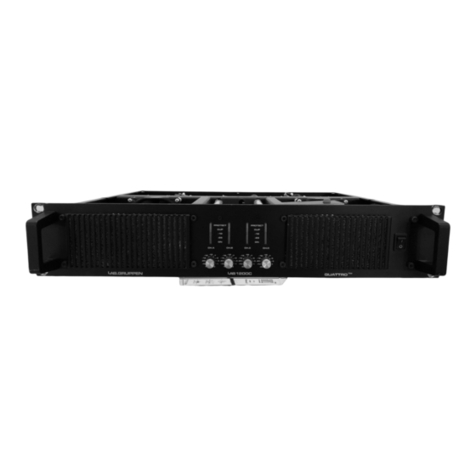
Lab.gruppen
Lab.gruppen ACN 2S brochure
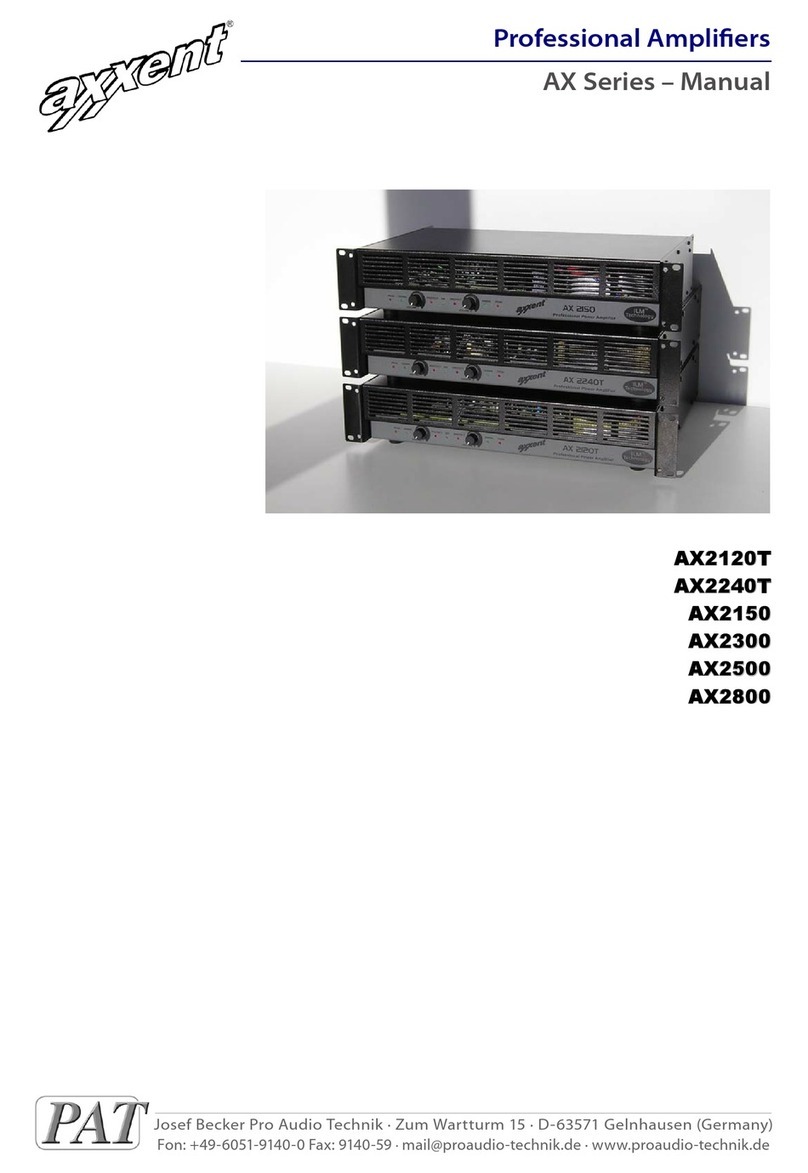
Josef BeckerPro Audio Technik
Josef BeckerPro Audio Technik axxent AX2120T user manual

Mesa/Boogie
Mesa/Boogie SINGLE RECTIFIER RECT-O-VERB 50 2 Series Schematics

MILBANK
MILBANK MMTS301SYS Owners & installation manual
